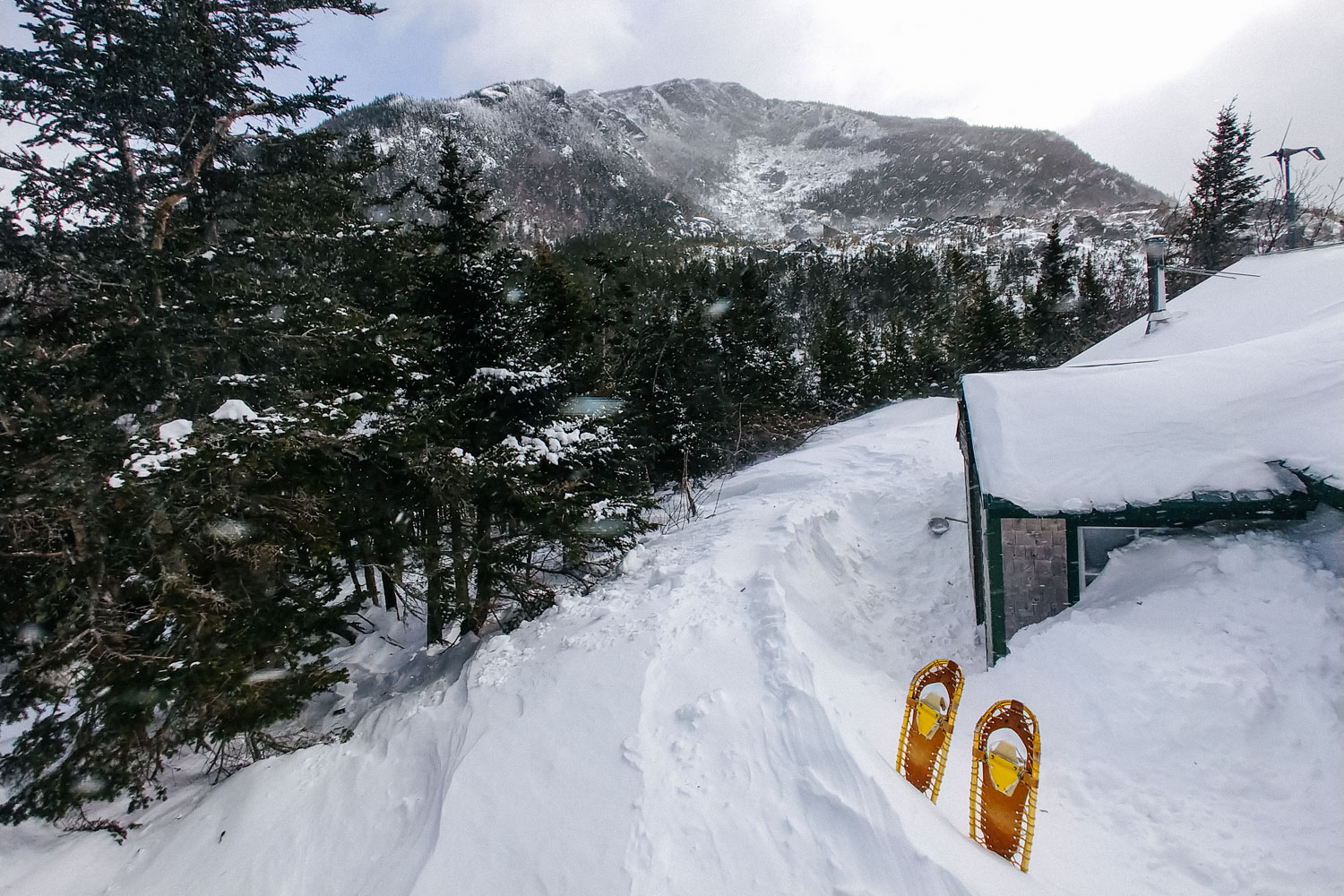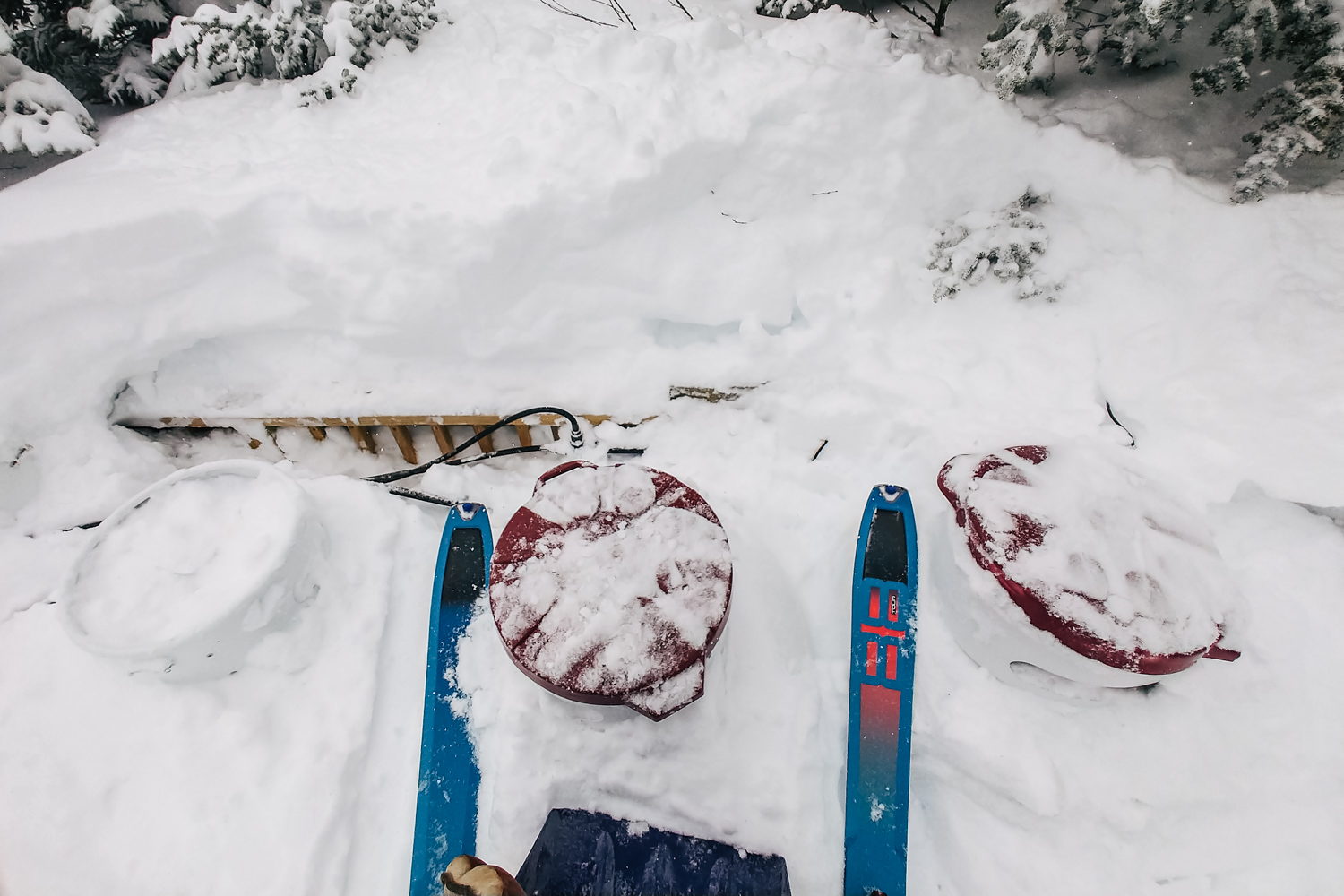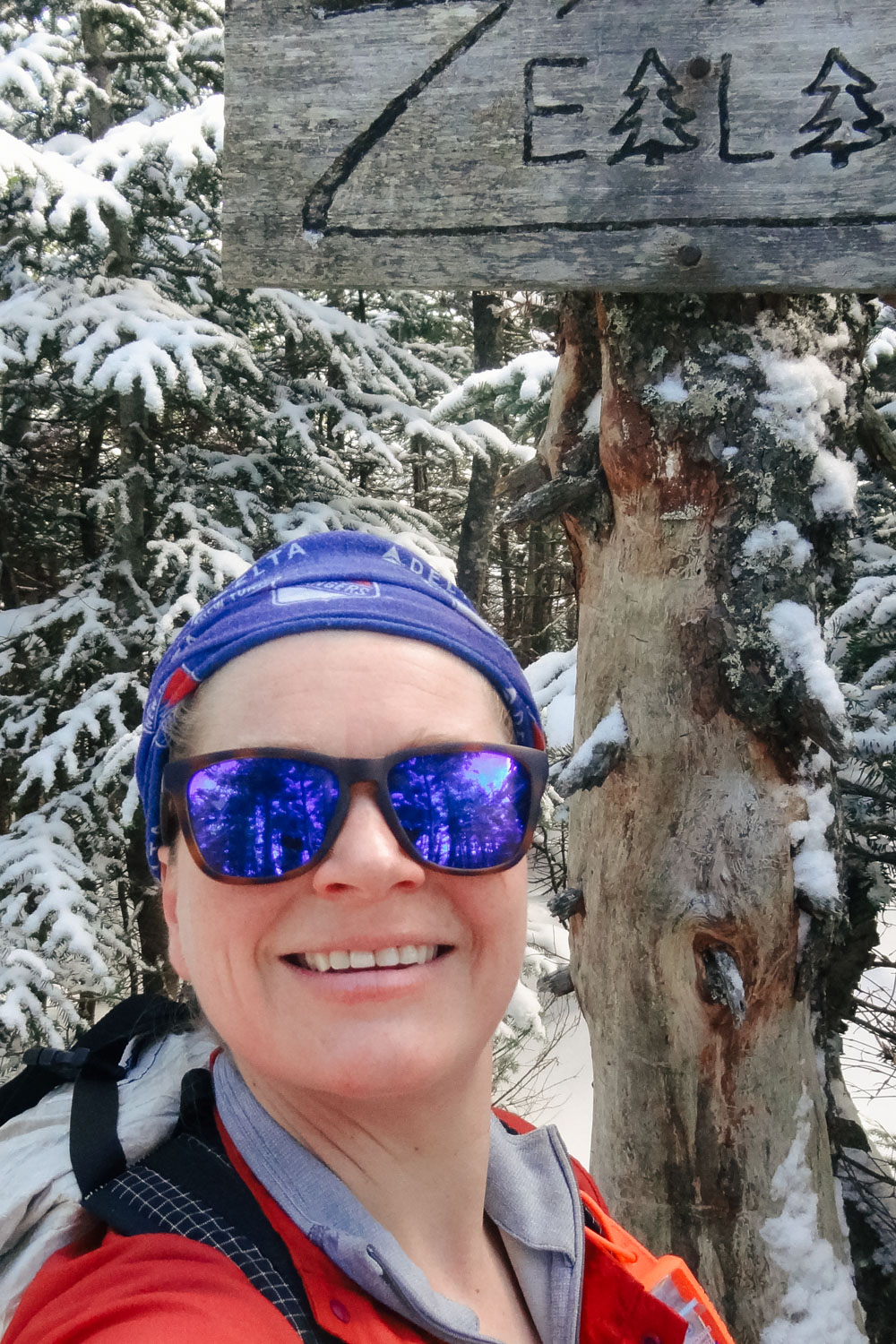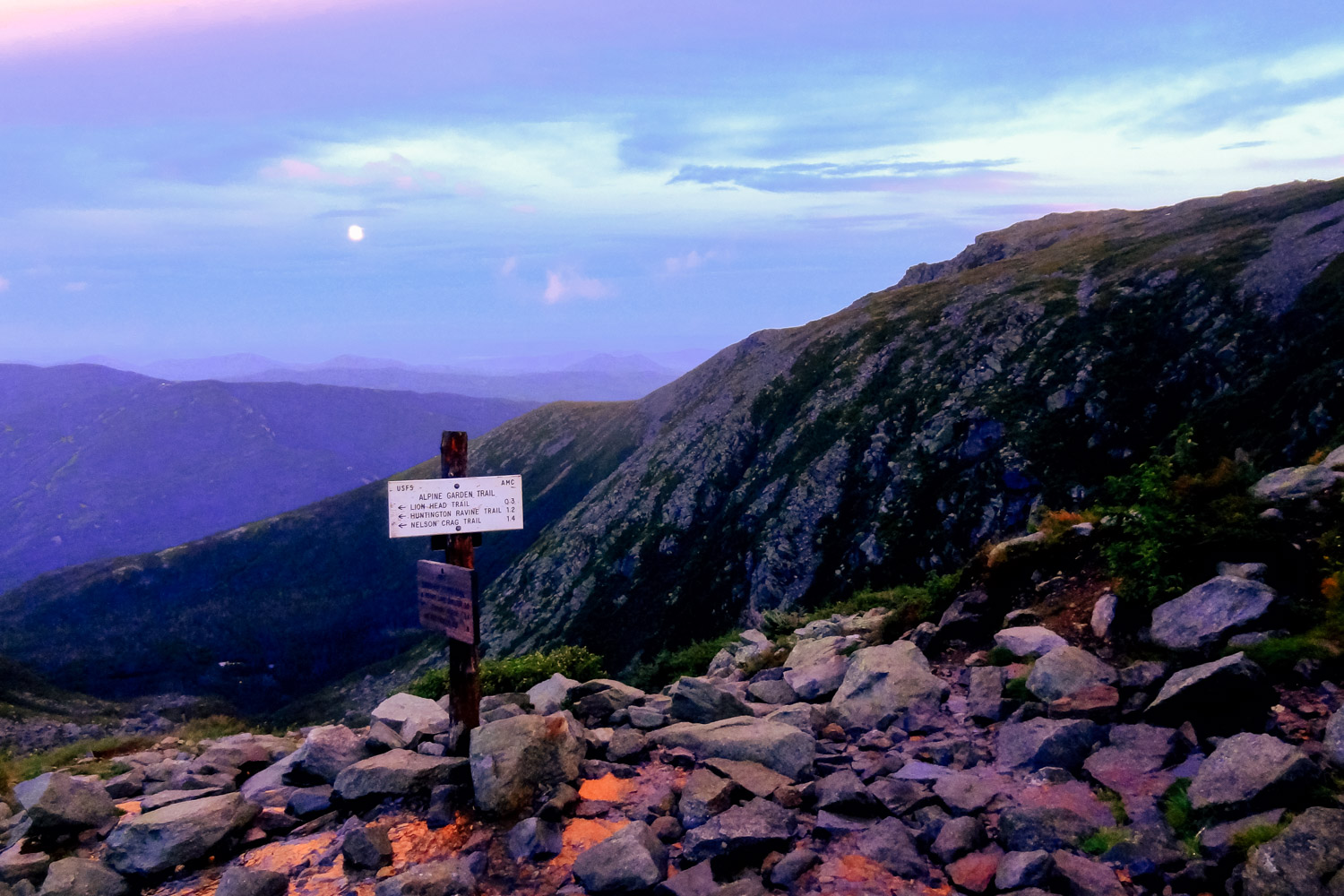What’s it Like to Work in the Woods?

Notes from a Backcountry Caretaker
What it’s like to get paid to work in the woods.
A conversation with Backcountry Caretaker Taylor Radigan
Along with her frequent ventures to complete the first known continuous traverse of all 115 4,000-foot peaks of the Northeast, accomplished outdoorsperson Taylor Radigan has literally called the backcountry home for whole seasons as a caretaker for mountain clubs in the region. Getting paid to work in the woods is a dream job for the right person, and we were curious to know what the job is really like. So, we asked her. While Taylor’s perspective is specific to the Northeast, there are similar jobs in many regions, and her answers feel relatable to many outdoor-related roles.
Whether you’re interested in finding this type of work, or just curious what it’s like to be the person who unclogs toilets and wrangles guests for their fees (along with sighting moose and brilliant sunsets, of course) read on for a Q&A with a caretaker:
You have extensive experience in the Northeastern backcountry, both as an outdoorsperson and as a caretaker employed by various mountain clubs. What inspired you to seek out this work?
I’d already done a lot of backpacking in the Northeast by the time I’d moved up to New Hampshire to work for the Appalachian Mountain Club, including the Long Trail and Northville-Placid Trail.
I looked at it as an opportunity to give back to the lands I’ve gained so much from. I’m from Long Island and was looking to live in the mountains and spend more time outdoors. I don’t think anyone who loves the backcountry wouldn’t be interested in getting paid to live in the woods either.
I worked as a caretaker for the Appalachian Mountain Club at the Hermit Lakes Shelters, Zealand Hut, and Carter Notch Hut, and for their construction crew. At the Green Mountain Club, I was the lead caretaker for Camel’s Hump. I’ve also been a caretaker at the Gray Knob Cabin for the Randolph Mountain Club.
I don’t think anyone who loves the backcountry wouldn’t be interested in getting paid to live in the woods…
How does one go about getting a caretaker job? What skills are required?
A desire to grow and learn is by far the most important asset for a caretaker to have. As Joe Roman says on the AMC caretaker application, “The person that enters the woods in May will not be the same person that walks out at the end of your season.”
For backcountry caretaking like the GMC, RMC and AMC offer, comfort living in the woods is extremely helpful. GMC has some positions in southern Vermont that are great for accommodating to the ruggedness of northern New England. Fit day hikers looking to expand their backcountry experience can look at Summit Steward positions for the Adirondack Mountain Club in New York.
In any of these positions, one needs to genuinely care about the lands, and be independent and self-sufficient. It’s on you to set your schedule in a way that allows you to get all your work done and spend time enjoying yourself. This is a very reasonable goal, but there’s usually no one around to push you into it.

Digging out snow and propane tanks at Carter Notch and a closed up Gray Knob Cabin.
There’s probably no such thing as a “typical day” on the job, but can you tell us what one might look like?
This is a general outline of a day in the Whites (AMC and RMC):
- 7a-7:45a — Weather update/morning radio call and breakfast
- Until ~10a — Talk to guests about their plans for the day and mind the camp
- 10a-4p — Explore the area/trail work projects/composting
- ~1p — Make lunch on project days
- ~4p — Return to camp, snack/start dinner, wrangle guests into beds/platforms/the shelter
- 5p — Evening radio call, make dinner, hang out with guests
What’s one experience you had as a caretaker that you think would surprise people?
Someone tried to flush an orange down the toilet my first weekend at the Hermit Lake Shelters in Tuckerman Ravine. Now, I’ve really come land, sea, and air at this over time, and here’s what I think happened.
A person comes into the bathroom to relieve themself and decides to snack on a delicious orange while they’re on the toilet, as evidenced by the orange peels on the floor next to the toilet. I’m going to give this person the benefit of the doubt that they dropped their freshly peeled whole orange in the toilet and didn’t want to stick their hand in there, then tried to flush it. This didn’t work and clogged the toilet. I don’t think you can flush an orange down a regular toilet, but those toilets clog if you even look at them funny. I spent a lot of time plunging toilets there. I think it’s surprising Hermit Lakes has flush toilets at all, but that will change to composting toilets within the near future.
Someone hiked up to the Camel’s Hump summit with a blow-up doll on their back. His name was Phteve. The doll, not the guy carrying it. It was his birthday. The guy, not the doll. Picking your battles is important as a caretaker, and no one on the summit complained or seemed offended, so I left it alone. Ptheve and his porter were among over 900 visitors to the Camel’s Hump summit that day.
Tending to a hut or other remote shelters offers a unique opportunity to get to know a place more intimately. How did caretaking affect your perception or relationship with certain landscapes/locations?

A selfie at Zealand with snow-covered trees and a smile.
A backpacking trip has the ultimate goal of getting from point A to point B. Hiking speed allows for a deep connection with the wilderness, but one is just passing through. The experience is of a moment in time at a particular location. Spending a season watching the landscape change and being an active participant towards improving that land is a different and wonderful experience. You’ll leave visible accomplishments on the trails and campsites you work at. You’ll witness extreme weather and have encounters with the flora and fauna that are rare.
Spending a season watching the landscape change and being an active participant towards improving that land is a different and wonderful experience.
I started working at Hermit Lake Shelters in Tuckerman Ravine in mid-May of a solid snow year, and it was still very much winter in the bowl. My experience with rapid changes in weather began immediately, with the largest snowstorm ever recorded in May dumping over 33 inches of snow on Mount Washington. Two days later, the summit had record warmth. Through the spring, I witnessed the snow melt and ice fall to feed the growth of vegetation.
Skiers visited into July as the black flies emerged and the alpine flowers bloomed. A moose and her calf lived nearby for most of the summer and were frequent visitors to the site. I spent much of my free time deeply exploring Tuckerman and Huntington Ravines. After a significant rainstorm in July, I fixed the damage to the water system the storm had done and then immediately went to respond to a leg injury. That resulted in a 6-hour carryout.
Summer crowds thinned through the fall and I had more time to myself. Things got busy again as the fall colors flourished. My season ended in late October during a strong rainstorm that brought over 6 inches of rain in three days. I hiked out of Tux and into Zealand Hut during the downpour on the same day to start a new season there.

A stormy sunset at Tux.

The porch view at Zealand with subtle colors of autumn.
What do you wish more people understand about these shared spaces? How can we all be good stewards?
- Don’t camp where you’re not supposed to.
- Please bury your poop if you’re not using a privy and don’t kill the alpine plants by stepping on them.
- If you throw trash in a composting system, someone has to pick it out of the poop and then pack it out.
- No caretaker wants to give you a hard time, they’re just trying to spread the best practices in the area they work.
- Please, just give caretakers the fee, you don’t know what they dealt with that day.
What’s the most significant thing you’ve learned from your time as a caretaker that you will continue to carry forward into the outdoors and other work? (About anything–yourself, conservation, humans, nature, etc.)
Let people take care of their basic needs before you ask them for stuff, and most are more cooperative if you find a way to tell them what they can do instead of what they can’t.
It’s like backpacking: once you learn you can rely on yourself to figure out the many random situations caretaking throws you into, you have the confidence to do anything. A good caretaker learns to wear many hats, and the experience of combining hospitality, carpentry, ecology, geology, education, knowledge of local history, public speaking and outdoor skills has been invaluable to bring to future experiences. I’ve never had a job where I’ve learned so much.
It takes a conscious effort to not take ownership over a place you work, to not consider it yours. You’re just there to help make it better for a while, then it’s someone else’s turn.
Yogi-Bear-ing works. Most of my dinners on busy Saturday nights at Carter were what guests gave me after I walked over and told them they had the most delicious-looking dinner in the whole hut.
Taylor Radigan is currently based in Leadville, CO. Follow what she’s up to at gettherefromanywhere.com and on Instagram @gettherefromanywhere.


Be the first to comment